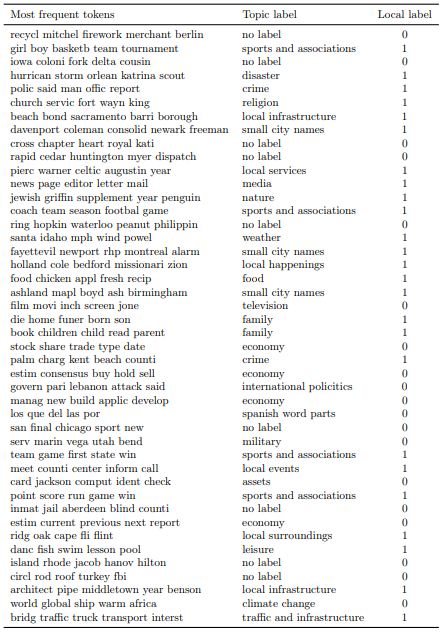and the distribution of digital products.
DM Television
Media Slant is Contagious: Topics From the Newspaper-Based LDA Model
Abstract and 1 Introduction 2. Data
3. Measuring Media Slant and 3.1. Text pre-processing and featurization
3.2. Classifying transcripts by TV source
3.3. Text similarity between newspapers and TV stations and 3.4. Topic model
4. Econometric Framework
4.1. Instrumental variables specification
4.2. Instrument first stage and validity
5. Results
6. Mechanisms and Heterogeneity
6.1. Local vs. national or international news content
6.2. Cable news media slant polarizes local newspapers
\ Online Appendices
A. Data Appendix
A.2. Alternative county matching of newspapers and A.3. Filtering of the article snippets
A.4. Included prime-time TV shows and A.5. Summary statistics
B. Methods Appendix, B.1. Text pre-processing and B.2. Bigrams most predictive for FNC or CNN/MSNBC
B.3. Human validation of NLP model
B.6. Topics from the newspaper-based LDA model
C. Results Appendix
C.1. First stage results and C.2. Instrument exogeneity
C.3. Placebo: Content similarity in 1995/96
C.8. Robustness: Historical circulation weights and C.9. Robustness: Relative circulation weights
C.12. Mechanisms: Language features and topics
C.13. Mechanisms: Descriptive Evidence on Demand Side
C.14. Mechanisms: Slant contagion and polarization
B.6. Topics from the newspaper-based LDA model
\

\

\
:::info This paper is available on arxiv under CC 4.0 license.
:::
:::info Authors:
(1) Philine Widmer, ETH Zürich and [email protected];
(2) Sergio Galletta, ETH Zürich and [email protected];
(3) Elliott Ash, ETH Zürich and [email protected].
:::
\
- Home
- About Us
- Write For Us / Submit Content
- Advertising And Affiliates
- Feeds And Syndication
- Contact Us
- Login
- Privacy
All Rights Reserved. Copyright , Central Coast Communications, Inc.